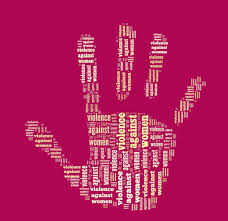Children at high risk of sexual exploitation in Nepal: Report
Kathmandu, February 1
Painting a gloomy picture of children’s condition in Nepal, a study report published by Bangkok-based ECPAT International last week has revealed that the children in the country are at high risk of sexual exploitation.
The Nepal Country Overview (A report on the scale, scope and context of the sexual exploitation of children) has highlighted the most pressing risks presented in the paper, including weak laws on online exploitation, slow economic development and recovery from the 2015 earthquakes, and risks from the rising trend of ‘voluntourism’.
To understand the situation, the global network of civil society organisation, which works to end the sexual exploitation of children, drew information from the Economist’s Out of the Shadows Index which looks at the government’s response to fight sexual exploitation of children, and the ECPAT Country Overview report on Nepal. In the Index, Nepal scored 46.4/100, meaning there is still a plenty of work for the government to do in order to improve the national response.
Nepal ranked 39 out of 60 countries assessed by the Out of the Shadows Index, with a score of 46.4. Within the region of South Asia, Nepal was ranked ahead of Bangladesh (35.3) and Pakistan (28.6), but behind India (58.2) and Sri Lanka (51.5).
According to the report, Nepal’s position on the lower end of the ranking is partially explained by the uncoordinated national policy framework that includes loopholes and inconsistencies which hampers the efforts to tackle this crime.
After the earthquakes, the Government of Nepal, in collaboration with international and local organisations, made efforts to prevent children from being trafficked and unnecessarily placed in care homes. They introduced both checkpoints and police centres in earthquakeaffected districts, as well as border interception points and banned children from travelling without guardians.
An example of increased vulnerability for children can been seen in the phenomenon of child, early and forced marriages.
It is closely linked to gender inequalities and social norms and in times of crisis, desperate families can marry off dependent girls as a way of coping with economic hardship. It can also be seen as a way of preventing sexual violence as girls without husbands are viewed as ‘unprotected’ or ‘vulnerable’.
As of 2019, Nepal has the 17th highest rate of child marriage in the world—a phenomenon found by researchers and practitioners to be exacerbated by the earthquakes.
Nepal scored 67/100 for the Index’s indicator on societal attitudes towards sex, sexuality and gender and 52/100 for the indicator on social protections provided to children. Both play a critical role in protecting children from sexual abuse and exploitation.
For example, social norms that de-value girls and women, or consider them only as a ‘burden’ on the family maintain harmful gender discrimination in the country.
“Similarly, indigenous groups and low caste communities are politically, socially, economically and culturally marginalised, making them highly susceptible to various forms of sexual violence, including exploitation.
Discrimination based on caste and gender is further exacerbated by poverty. To escape poverty and discrimination, many Nepali children take jobs in the entertainment sector — an environment where they are highly vulnerable to sexual exploitation,” the report said.
Last year, 600 young people (270 children) working in entertainment sector, were asked about their experiences. The survey found that over 60 per cent of the child workers were exposed to flirting, groping, performing massages and engaging in sexual acts and six per cent of them reported that they were exposed to severe forms of sexual exploitation such as being forced to watch pornography and performing sexual intercourse, the report stated.






